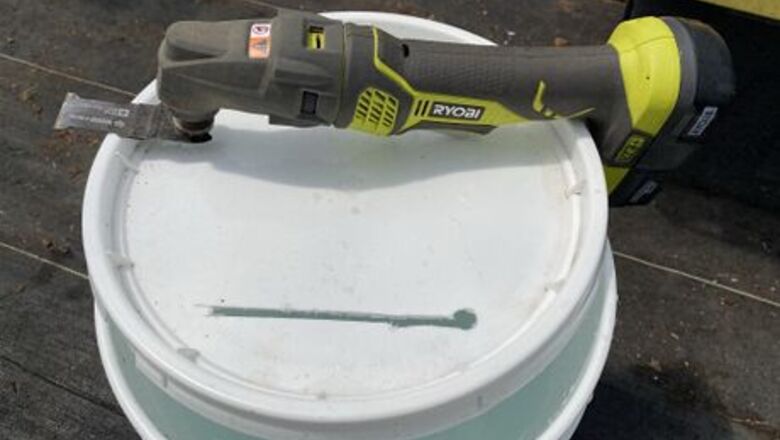
views
Wicking Bucket with Large Fabric Wick
Clean a used 5 gallon (20 L) plastic bucket with no drainage holes and a lid. You could also purchase a new bucket and lid from a hardware or department store.
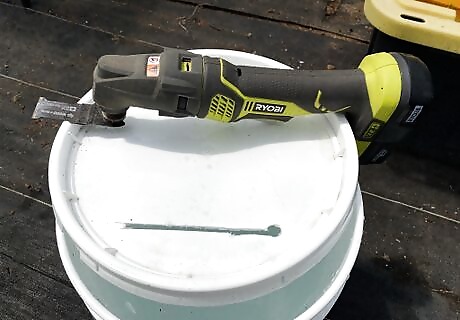
Cut a slit in the lid, 5 inches (12+ cm) long and 1/4 inch (5 mm) wide with a utility knife, manual keyhole saw, or power jigsaw or oscillating saw. Drill a 3/4 to 1 inch (2-2.5 cm) hole near the side of the lid to for adding water to the bucket.
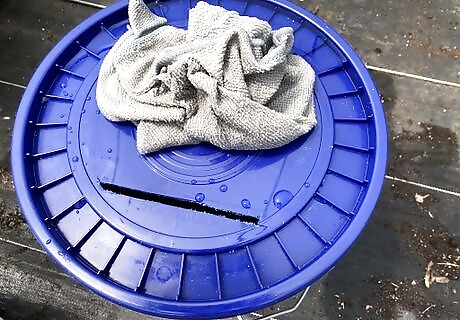
Saturate a towel in water. Clean a used towel or washcloth (12-18 inches [30-35 cm] in length and width) or purchase one at a department store. Fill the bucket with water and saturate the towel in the water. Artificial fibers last longer than cotton in this use. It may be best to move the bucket to its final location before you fill it because the water is heavy.
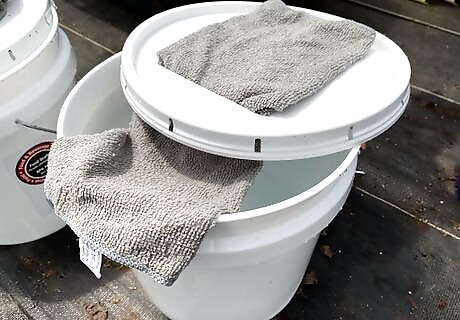
Feed the folded towel (wick) through the slit in the bucket lid. Squeeze some of the water from the towel (large fabric wick), fold it 2+ times, and feed it into the slit. Leave about 5+ inches (12+ cm) on the lid and allow at least 6+ inches (15+ cm) to hang into the water in the bucket. Water will wick from the bucket through the towel to the plant that will be placed on the wick.
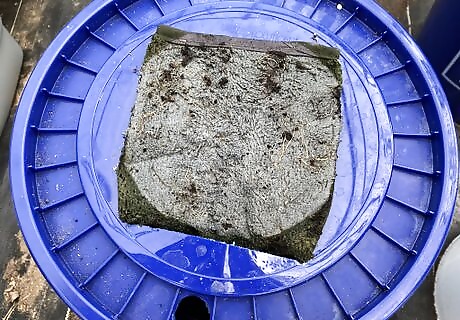
Place the lid with the large fabric wick (towel) on the bucket. This is the self watering system that will keep plants uniformly watered 24 hours a day.
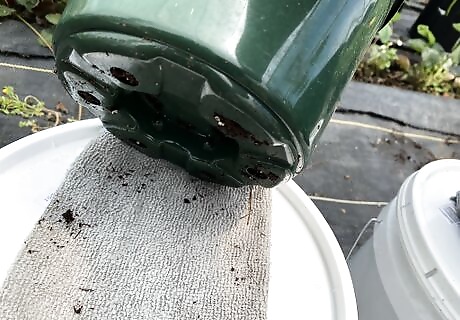
Transplant your plant into potting soil in a plastic pot that has holes in the very bottom of the pot. This is important! The potting soil in the pot must have direct contact with the wick (towel). Capillary action will move water from the bucket, through the wick, to the potting soil in the pot. Additionally, roots from the plant will grow through the holes in the pot and into the large fabric wick (towel). The wick is an excellent environment for roots, plenty of water and air.
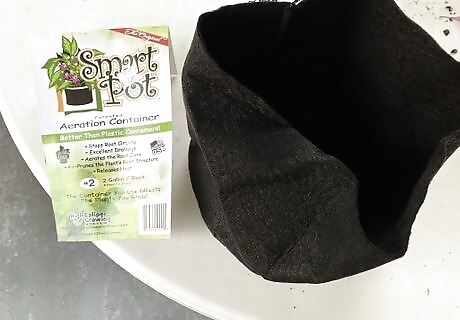
Alternatively, you can transplant your plant into a fabric pot. A fabric pot is easily watered by this wicking or subirrigation technique.
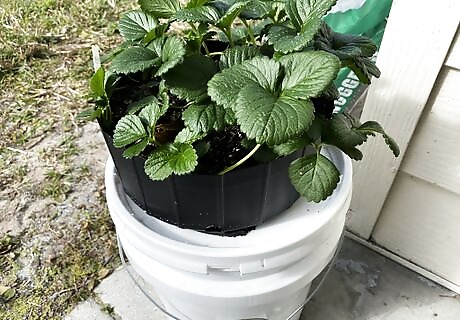
Place your pot, after transplanting, on the large fabric wick (towel) on the bucket lid. This is important! Water your plant and potting soil thoroughly at this time. This establishes the wicking connection (capillary connection) between the water in the bucket and the potting soil. Every time the plant is removed from the wick, it must be rewatered from the top to reestablish the wicking connection. However, there is no need to move the plant and pot from the wick at any time.
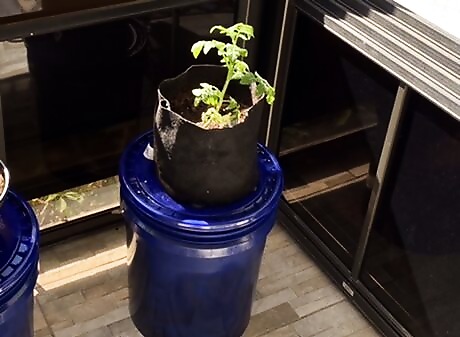
Prepare to add water to the bucket about once a week. When plants are young, when temperatures are cool, and during rainy weather, add water every 10 to 20 days. Surprisingly, it's that easy. If plants are large and temperatures are hot, prepare to add water every 5-7 days.
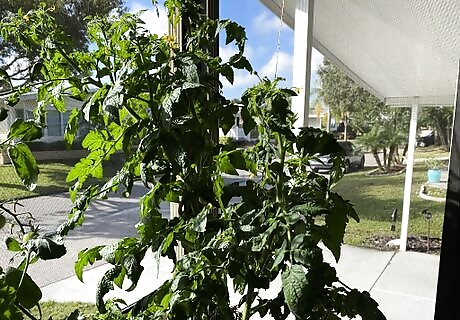
Add fertilizer periodically. Add your typical water-soluble fertilizer to the potting soil with a watering can or to the water in the bucket. Small and young plants need fertilizer every 3-4 weeks. Larger, older plants need fertilizer every 1-3 weeks. Slow-release or controlled-release fertilizer works fine. Both inorganic (chemical) fertilizer or organic fertilizer works fine. Just remember organic fertilizer is somewhat slower to get new growth because the organic components have to break down to the nutrients that plant roots absorb.
Wicking Tub with Large Fabric Wick
Clean a used 5 to 30 gallon (20-120 L) plastic storage tub with no drainage holes and a lid. Or purchase a new storage tub and lid from a hardware or department store.
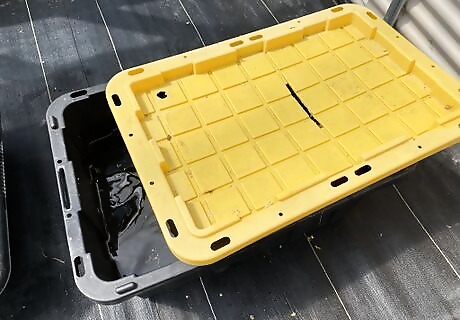
Cut a slit in the lid, 5 inches (12+ cm) long and 1/4 inch (5 mm) wide with a utility knife, manual keyhole saw, or power jigsaw or oscillating saw. Drill a 3/4 to 1 inch (2-2.5 cm) hole near the side of the lid to be used for adding water to the tub.
Saturate a towel in water. Clean a used towel or washcloth (18-30 inches [35-60 cm] in length and width) or purchase one at a department store. Artificial fibers last longer than cotton in this use. Fill the tub with water and saturate the towel in the water. It may be best to move the tub to its final location before you fill it because the water is heavy.
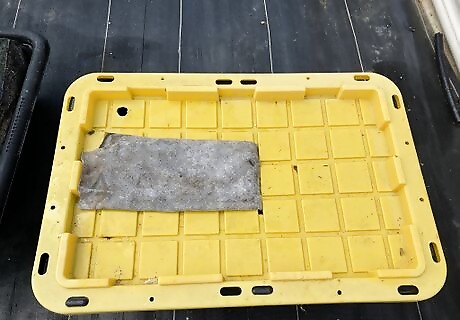
Feed the folded towel (wick) through the slit in the tub lid. Leave about 8+ inches (20+ cm) on the lid and allow at least 6+ inches (15+ cm) to hang into the water in the tub. Water will wick from the tub through the towel to the plant that will be placed on the wick.

Purchase a bag of potting soil that will fit on the lid. Lay the bag on the lid and cut a few 2 to 3 inch (5-7 cm) holes in one side of the bag. Place these holes where they will line up with the wick. Then flip the bag over so the potting soil in the bag has direct contact with the wick. This is the capillary connection between the wick and the potting soil.
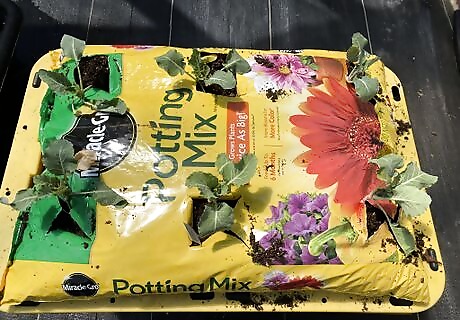
Transplant the plants into potting soil after holes are cut in the plastic bag. This is important! The potting soil in the bag must have direct contact with the wick (towel). Capillary action will move water from the tub, through the wick, to the potting soil in the bag. Additionally, roots from the plant will grow through the holes in the bag and into the large fabric wick (towel). The wick is an excellent environment for roots, plenty of water and air from this wicking or sub-irrigation technique. This is important! Water your plants and potting soil thoroughly at this time. This establishes the wicking connection (capillary connection) between the water in the tub and the potting soil. Every time the plants are removed from the wick, it must be rewatered from the top to reestablish the wicking connection. However, there is no need to move the plant and pot from the wick at any time.
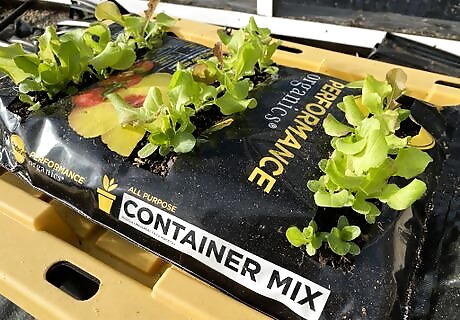
Add water to the tub about once a week. When plants are young, when temperatures are cool, and during rainy weather, add water every 10 to 20 days. Surprisingly, it's that easy. If plants are large and temperatures are hot, prepare to add water every 5-7 days.
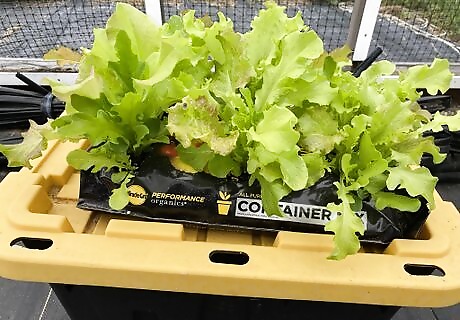
Add fertilizer periodically. Add a typical water soluble fertilizer to the potting soil with a watering can or to the water in the tub. Small and young plants need fertilizer every 3-4 weeks. Larger, older plants need fertilizer every 1-3 weeks. Slow release or controlled release fertilizer works fine. Both inorganic (chemical) fertilizer or organic fertilizer works fine. Just remember organic fertilizer is somewhat slower to get new growth because the organic components have to break down to the nutrients that plant roots absorb.

















Comments
0 comment